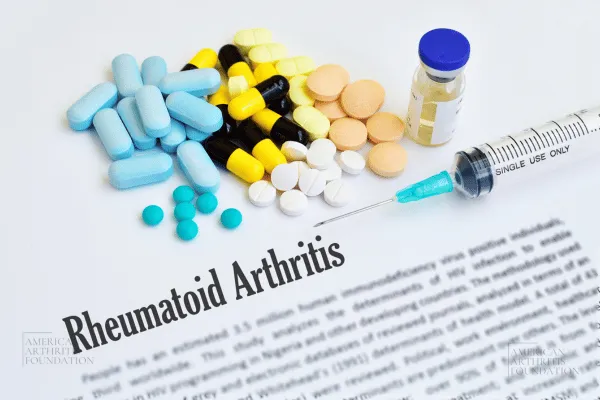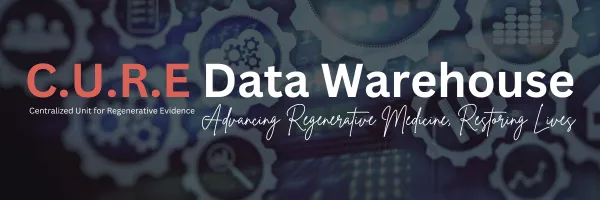About Arthritis
As the nation’s #1 cause of disability, arthritis affects nearly 60 million adults and 300,000 children. Over 100 types of arthritis and related conditions damage the joints and often other organs.
How can we assist you?
Helpful Tools for You

Targeting ELK3: A Potential Breakthrough in Rheumatoid Arthritis Treatment
Rheumatoid arthritis (RA) is a chronic autoimmune disease that affects millions of people worldwide, causing painful joint inflammation and progressive damage to cartilage and bone. In RA, the immune system mistakenly attacks the lining of the joints, leading to stiffness, swelling, and over time, destruction of joint tissues. Current treatments have improved life for many patients by reducing pain and inflammation, but they mainly control symptoms and do not fully halt the underlying disease process. As a result, RA can remain active and continue to damage joints even when symptoms are managed, highlighting the need for therapies that address the root causes of the disease.
The Limits of Current RA Treatments
Most conventional RA treatments focus on damping the immune attack and relieving symptoms, rather than curing the disease. Standard therapies include:
Anti-inflammatory medications (NSAIDs and corticosteroids): These drugs can quickly reduce joint pain and swelling but only offer temporary relief. They do not prevent long-term joint damage and can have significant side effects.
Conventional DMARDs (disease-modifying antirheumatic drugs): Medications like methotrexate suppress the immune system broadly to slow disease progression. They can reduce the rate of joint damage, but they don't eliminate the disease, and patients often need continuous treatment.
Biologic therapies and JAK inhibitors: Newer treatments target specific inflammatory molecules (for example, TNF inhibitors or IL-6 blockers) or immune cell signals. These have significantly improved RA management by controlling inflammation more precisely. However, they can lose effectiveness over time or may not work for everyone, and they come with risks like infections due to immune suppression.
Surgery (in severe cases): Joint replacement or repair surgeries can restore function when damage is extensive, but they address the consequences of RA rather than the disease itself.
While many of these treatments do slow joint erosion and improve quality of life, they primarily aim to relieve symptoms and restrain inflammation, not to cure RA. None of the current medications can completely stop the autoimmune attack or permanently reset the immune system to a healthy state. This is why researchers are actively exploring new approaches that could more directly target the underlying drivers of RA.
ELK3: A New Player in RA Pathogenesis
One promising new discovery is a protein called ELK3, which scientists have identified as a potential key player in RA. ELK3 is a transcription factor, meaning it helps control the activity of certain genes inside cells. It has been known in other contexts (such as cancer biology) to influence cell growth, movement, and survival. Recent research has found that ELK3 is overactive in RA joint tissues and may be contributing to the aggressive behavior of cells that drive the disease
In RA, the lining of the joints (the synovium) becomes thick and inflamed, populated by fibroblast-like synoviocytes (FLS) – cells that act abnormally and invade nearby cartilage and bone. These RA FLS are often described as having "tumor-like" characteristics: they proliferate excessively and secrete enzymes that break down cartilage, leading to erosion of bone around the joint. The new studies show that ELK3 is present at high levels in these RA synovial cells, and it appears to be a driving force behind their destructive behavior. When researchers experimentally turned off or blocked ELK3 in RA synovial cells, the cells' invasiveness and rapid growth were significantly reduce. This suggests that ELK3 acts as a kind of master switch that the disease uses to fuel joint damage.
Another intriguing aspect of ELK3’s role is how it affects cell survival. The RA synovial cells not only grow aggressively, but they also resist dying off when they should. Typically, harmful or damaged cells can undergo a self-destruct process, helping protect the body. In RA, FLS cells seem to evade some of these self-destruct signals. The research found that ELK3 helps these cells avoid a specific type of cell death known as ferroptosis. Ferroptosis is a form of cell death driven by iron-dependent oxidative damage (essentially, an overload of harmful oxidative stress within the cell) By keeping these cells alive and active, ELK3 indirectly allows the inflammation and tissue damage to continue. Therefore, targeting ELK3 could remove this "safety net" for the bad actors in RA joints, making it easier for the body to eliminate them and halt the damage they cause.
Blocking ELK3 in Preclinical Studies: Less Inflammation and Joint Damage
Early preclinical studies – experiments in the laboratory and in experimental models of RA – have shown striking results when ELK3 is blocked. In cellular experiments, silencing ELK3 led to a spike in markers of ferroptosis in RA synovial cells, meaning those destructive cells were more likely to undergo cell death due to oxidative stress. At the same time, the cells produced fewer inflammatory signals and enzymes, given that their proliferation and invasion were curtailed. In essence, removing ELK3 put the brakes on the cellular engine of joint destruction.
In animal models of arthritis, a similar story is unfolding. Blocking ELK3 activity has been associated with lower inflammation in the joints and protection of cartilage and bone from erosion, compared to untreated disease models. By reducing the aggressive behavior of synovial cells, ELK3 inhibition helps preserve the joint structure. Researchers observed less swelling and damage in the joints when ELK3 was inhibited, indicating that targeting this protein can prevent joint destruction in these models. While these results are still preliminary, they are exciting because they demonstrate the potential of ELK3-targeted therapy to do more than just ease pain – it actually changes the course of the disease process in these tests.
This approach could translate into a therapy that keeps the immune attack in check and protects the joints from ongoing damage. For patients, that might mean fewer long-term complications of RA, such as deformities or loss of joint function, if the disease could be truly subdued at the biological level.
A Shift Toward Halting Disease Progression
The discovery of ELK3’s role in RA opens the door to a new class of treatments that aim to halt or significantly slow down the progression of RA, rather than simply managing its symptoms. Current therapies like NSAIDs, steroids, and biologics mainly focus on controlling inflammation and pain. In contrast, an ELK3-targeted therapy would go after the disease’s core mechanism in the joints – the abnormal behavior of synovial cells – effectively attempting to shut off the source of inflammation and damage.
Experts see this kind of strategy as a potential game-changer. It’s part of a broader trend in RA research to find therapies that can modify the disease at a fundamental level. One researcher noted that given the limited efficacy of existing treatments for some patients, novel approaches are needed to truly address the underlying disease mechanisms. A drug that blocks ELK3 would exemplify such a novel approach. By targeting a molecule that orchestrates how destructive cells survive and attack the joint, this treatment could provide benefits beyond symptom relief. In theory, it could drive RA into remission more effectively or help patients who do not respond to available medications.
If successful, targeting ELK3 would represent a significant shift in how we treat RA. Instead of a lifetime of managing pain flare-ups and controlling inflammation, patients might receive a therapy that slows the disease itself, potentially reducing the amount of medication needed over time and lowering the risk of long-term joint damage. Of course, this is the vision that remains to be proven through further research.
Significance of the Findings and What’s Next
The identification of ELK3 as a key player in RA pathogenesis is a significant breakthrough in our understanding of the disease. It highlights a previously unrecognized pathway (involving ferroptosis regulation) that RA uses to sustain joint inflammation. These early findings are promising: they suggest that by hitting this new target, we might disrupt RA’s vicious cycle of inflammation and tissue destruction at its source. For the millions living with RA, that kind of breakthrough could eventually translate into better outcomes and improved quality of life.
However, it is important to stress that this research is still in the early stages. So far, the benefits of ELK3 blockade have been demonstrated in preclinical settings (cells in a dish and animal models). More research and clinical trials will be needed to determine if a therapy blocking ELK3 is safe and effective in people. Drug development is a lengthy process: scientists would need to develop a drug (such as a small molecule inhibitor or antibody) that can specifically inhibit ELK3, and then test it in phased clinical trials to ensure it works for RA patients without unacceptable side effects. This process can take several years or more. Not every treatment that works in the lab will work in the clinic, so cautious optimism is warranted.
The good news is that this discovery has given researchers a promising new avenue to explore. Even if challenges arise, understanding the role of ELK3 in RA could lead to other insights and targets along the same pathway. It also reinforces the idea that driving harmful cells to die (for instance, via ferroptosis) or disabling their disease-causing functions can be a viable therapeutic strategy in autoimmune diseases like RA, in addition to the traditional approach of suppressing the immune system.
Staying Informed and Looking Ahead
For readers and RA patients, developments like the ELK3 discovery offer hope that better treatments are on the horizon. It’s important to stay informed about emerging therapies. The American Arthritis Foundation and similar organizations frequently share news about the latest research, so following these updates can help you learn about breakthroughs early. Knowledge is empowering – understanding new treatment strategies can prepare you to discuss them with your rheumatologist when the time comes.
If you have RA, consider talking to your healthcare provider about ongoing research and whether there are any clinical trials that might be appropriate for you. While we await future treatments, make sure to continue with the current therapies that are working for you, as they remain crucial for managing the disease today.
In summary, the discovery of ELK3 as a potential therapeutic target represents an exciting step toward treatments that could do more than ease the pain of rheumatoid arthritis – they might actually slow down or stop the disease’s progression. Though more studies are needed before an ELK3-based therapy becomes reality, this line of research underscores a hopeful message: scientists are getting closer to the root mechanisms of RA, and with each discovery, we move nearer to interventions that could significantly improve the lives of those affected by this challenging disease.
Effects of Arthritis

Cause of Disability
In the United States, 23% of all adults, or more than 54 million people, have arthritis. It is a leading cause of work disability, with annual costs for medical care and lost earnings of $303.5 billion.

Workforce Effects
Sixty percent of US adults with arthritis are of working age (18 to 64 years). Arthritis can limit the type of work they are able to do or keep them from working at all.

Global Impact
In fact, 8 million working-age adults report that their ability to work is limited because of their arthritis. For example, they may have a hard time climbing stairs or walking from a parking deck to their workplace.
Promoting Interventions That Reduce Arthritis Pain
American Arthritis Foundation recognizes several proven approaches to reduce arthritis symptoms:
Be active. Physical activity—such as walking, bicycling, and swimming—decreases arthritis pain and improves function, mood, and quality of life. Adults with arthritis should move more and sit less throughout the day. Getting at least 150 minutes of moderate-intensity physical activity each week is recommended.
Protect your joints. People can help prevent osteoarthritis by avoiding activities that are more likely to cause joint injuries.
Talk with a doctor. Recommendations from health care providers can motivate people to be physically active and join a self-management education program. Should your arthritis be interfering with your activities of daily living you may be a candidate to receive many new treatments, and learn how to reverse the arthritis condition.
Have a question?
We're Here to Help
By providing my phone number, I agree to receive text messages from the business.


